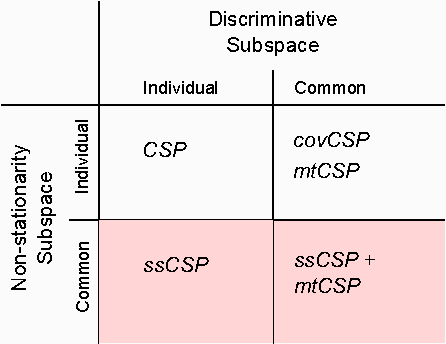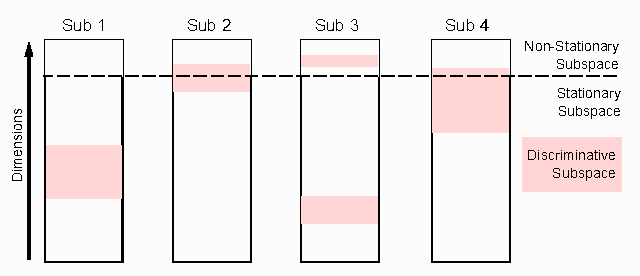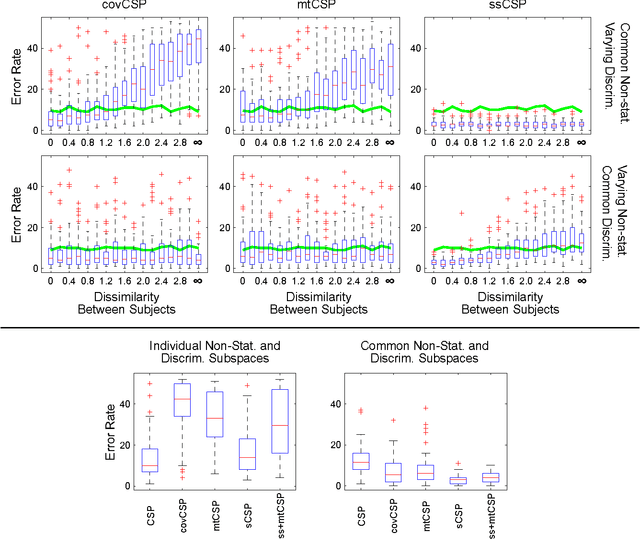Transferring Subspaces Between Subjects in Brain-Computer Interfacing
Paper and Code
Apr 03, 2013



Compensating changes between a subjects' training and testing session in Brain Computer Interfacing (BCI) is challenging but of great importance for a robust BCI operation. We show that such changes are very similar between subjects, thus can be reliably estimated using data from other users and utilized to construct an invariant feature space. This novel approach to learning from other subjects aims to reduce the adverse effects of common non-stationarities, but does not transfer discriminative information. This is an important conceptual difference to standard multi-subject methods that e.g. improve the covariance matrix estimation by shrinking it towards the average of other users or construct a global feature space. These methods do not reduces the shift between training and test data and may produce poor results when subjects have very different signal characteristics. In this paper we compare our approach to two state-of-the-art multi-subject methods on toy data and two data sets of EEG recordings from subjects performing motor imagery. We show that it can not only achieve a significant increase in performance, but also that the extracted change patterns allow for a neurophysiologically meaningful interpretation.
 Add to Chrome
Add to Chrome Add to Firefox
Add to Firefox Add to Edge
Add to Edge